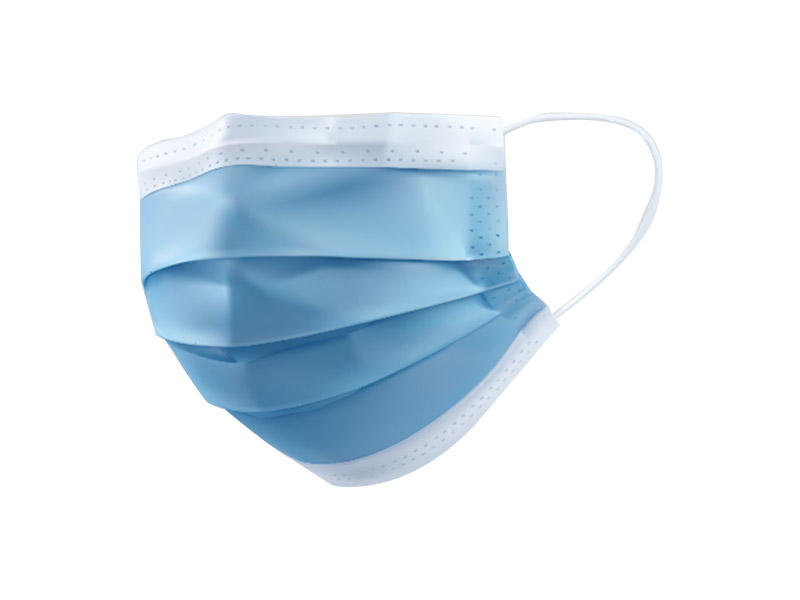
If your business or industrial laundry facility is looking to purchase isolation gowns or expand its healthcare textile rental and laundering services, isolation gowns present a profitable opportunity.
Knowing how to select the right isolation gown level for protection is important and we understand that it can be confusing, given all the different options available.
We take you through all the fundamentals – from what isolation gowns are, what the different levels mean to the three key things to consider when selecting the right gown to meet the needs of your end customer.
Isolation gowns, also called non-surgical gowns, are a type of PPE designed to protect the wearer from the spread of illnesses and diseases if they encounter a source of infection—whether solid or liquid. This includes blood, body fluids, and other infectious materials.
An isolation gown also provides two-way protection, keeping both the wearer and the patient safe from infection. The gown typically hits at the knee and ties closed in the back. It only protects against frontal contamination with partial neck-to-knee protection.
Consider the following factors before choosing which isolation gowns to purchase for your business.
Who will be wearing the gown? In what setting will they be working? The answers to those questions determine what type of isolation gowns you need.
Disposable isolation gowns are made from polyethylene or polypropylene. Reusable isolation gowns are made from cotton or synthetic materials like polyester or a poly-cotton blend. Synthetic materials generally do a better job blocking fluids, giving them an edge over cotton when it comes to stopping the spread of COVID-19.
The risk-level of the environment and type of exposure anticipated determines what types of isolation gowns you need. For example, in a low-risk environment (like a blood draw), the medical professional mostly likely needs an AAMI, Level 2 gown. We’ll dive more into the risk and classification types below.
Protective apparel, like isolation gowns, must conform to a set of standards and undergo a specific set of tests to determine the “liquid barrier performance and classification of protective apparel and drapes intended for use in health care facilities.2”
The standard ANSI/AAMI PB70:20122 created a classification system (Levels 1-4) for all apparel used in a healthcare setting. This includes isolation gowns, surgical gowns, and more. The FDA requires that all relevant medical textile manufacturers meet these standards.
The AAMI is the Association for the Advancement of Medical Instrumentation, a non-profit dedicated to supporting the advancement and safe use of medical technology. This organization, along with the ANSI (American National Standard Institute), established the testing standards used to evaluate isolation gowns and other healthcare textiles.
Manufacturers must use the following tests4 to determine a material or garment’s level of protection:
Level one gowns must only pass the impact penetration test.
Level two and level three gowns must demonstrate low water resistance and moderate water resistance (respectively) during the impact penetration and hydrostatic pressure tests. Level four gowns must pass the viral penetration test.
The four classifications used for isolation gowns are as follows3:
|
AAMI PB70:2012 |
Description & Applicability |
|
Level 1: |
Used for MINIMAL RISK situations: designed for use during basic care, as a cover for visitors, or in a standard medical unit |
|
Level 2: |
Used in LOW RISK situations: designed for use during a blood draw or suturing, in the ICU, or in a pathology lab |
|
Level 3: |
Used in MODERATE RISK situations: designed for use during arterial blood draw or an IV insertion, in the ER, or for trauma cases |
|
Level 4: |
Used in HIGH RISK situations: designed for use during surgery or long procedures, or when a non-airborne infectious disease is suspected, or pathogen resistance is needed |
Note: Standards Recognized by the FDA
Companies might advertise different product names when selling isolation gowns—patient gown, medical gown, procedural gown, non-surgical gown, etc. Ignore the name and focus on the level of protection advertised. A gown designed for use in a healthcare setting will include packaging or a description that clearly indicates what level of protection it offers. The level matters most because that’s what hospitals will care about when inquiring about your offerings.

When you’re ready to purchase isolation gowns for your business or institutional laundry facility, turn to Venus Group. We’re a textile manufacturer in the USA that manufactures a myriad of reusable medical textiles.











